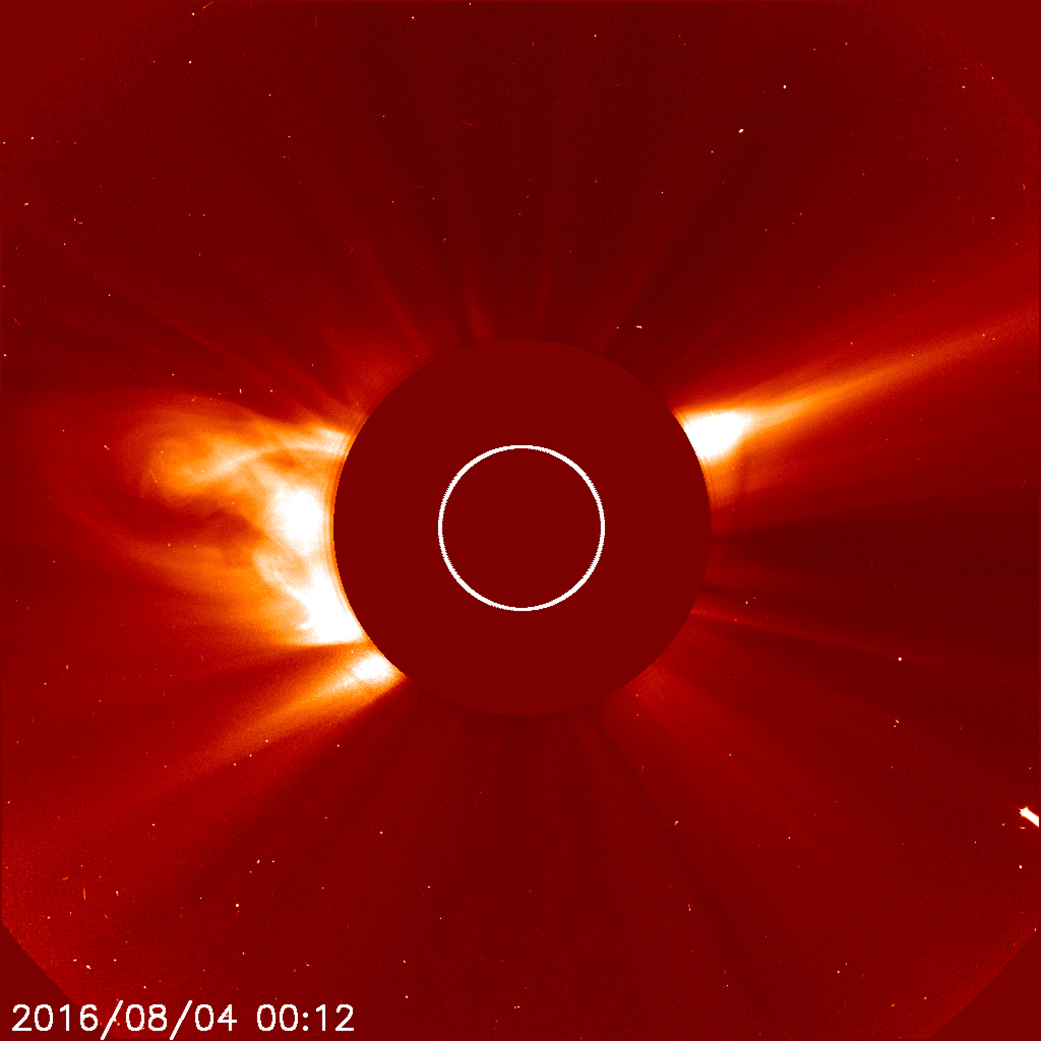Death Dive! Comet Plunges into the Sun at Mind-Blowing Speed

A comet with a death wish met a truly fiery end today (Aug. 4) when it was destroyed by the sun after diving toward the star at a truly jaw-dropping speed. It is one of the brightest sungrazing comet events in over two decades, one scientist says.
Video of the comet's death dive into the sun was captured by the Solar and Heliospheric Observatory (SOHO) between Aug. 2 and Aug. 4. It shows the comet zooming toward the sun at nearly 373 miles per second (600 kilometers per second). That's a mind-boggling 1.34 million mph!
Comets like the one swallowed by the sun are known as Kreutz sungrazers, and are characterized by orbits that take them incredibly close to the sun. Kreutz comets are believed to be fragments from a single large comet that broke up into smaller pieces thousands of years ago when it got close to the sun and the ice binding it together evaporated.
"This is one of the brightest Kreutz sungrazers we've seen over the past 21 yrs. Awesome!" astronomer Karl Battams tweeted. Battams also said that the comet was the "fastest object in the solar system" when it was destroyed by the sun.

Battams, who operates the NASA-funded Sungrazing Comets Project, provided regular updates on the sungrazer's recent encounter with the sun, which ended with the comet being vaporized.
"This comet didn't fall into the sun, but rather whipped around it – or at least, it would have if it had survived its journey," Sarah Frazier of NASA's Goddard Space Flight Center in Greenbelt, Maryland wrote in a statement. "Like most sungrazing comets, this comet was torn apart and vaporized by the intense forces near the sun."
You can see another video of the comet from SOHO here. The view also includes a view from NASA's Solar Dynamics Observatory (another sun-watching spacecraft) as the moon crossed in front of the sun as seen by the observatory.
Breaking space news, the latest updates on rocket launches, skywatching events and more!
Kreutz comets travel along what is called the Kreutz path, a single orbit that takes 800 years to complete. Kreutz comets pass by the sun and disintegrate almost every day, and while most go unnoticed, larger fragments such as the recent sungrazer can be spotted more easily, according to Spaceweather.com.
SOHO has been keeping a close eye on the sun's activity for more than 20 years. The satellite is a joint mission between NASA and the European Space Agency. While the mission's intended goal was to better predict space weather — such as solar flares and auroras — the satellite has made several discoveries about the sun and spotted thousands of these sungrazer comets.
Follow Samantha Mathewson @Sam_Ashley13. Follow us @Spacedotcom, Facebook and Google+. Original article on Space.com.
Join our Space Forums to keep talking space on the latest missions, night sky and more! And if you have a news tip, correction or comment, let us know at: community@space.com.

Samantha Mathewson joined Space.com as an intern in the summer of 2016. She received a B.A. in Journalism and Environmental Science at the University of New Haven, in Connecticut. Previously, her work has been published in Nature World News. When not writing or reading about science, Samantha enjoys traveling to new places and taking photos! You can follow her on Twitter @Sam_Ashley13.
